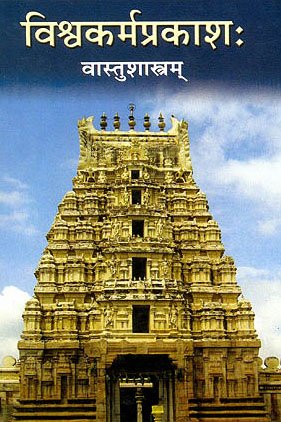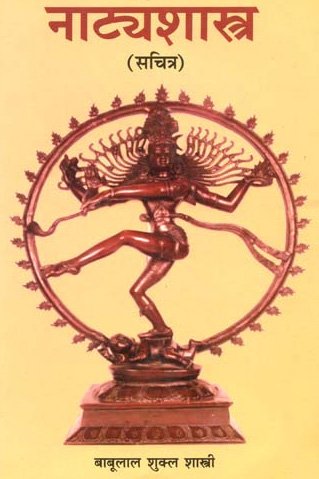Sunabha, Sunābha, Su-nabha: 12 definitions
Introduction:
Sunabha means something in Hinduism, Sanskrit. If you want to know the exact meaning, history, etymology or English translation of this term then check out the descriptions on this page. Add your comment or reference to a book if you want to contribute to this summary article.
In Hinduism
Vastushastra (architecture)
Source: Wisdom Library: Vāstu-śāstraSunābha (सुनाभ) refers to a type of temple (prāsāda) classified, according to Samarāṅgaṇasūtradhāra chapter 57. The temple is mentioned as one of the twenty temples being a favorite of Viṣṇu. The Samarāṅgaṇasūtradhāra is an 11th-century encyclopedia dealing with various topics from the Vāstuśāstra.

Vastushastra (वास्तुशास्त्र, vāstuśāstra) refers to the ancient Indian science (shastra) of architecture (vastu), dealing with topics such architecture, sculpture, town-building, fort building and various other constructions. Vastu also deals with the philosophy of the architectural relation with the cosmic universe.
Natyashastra (theatrics and dramaturgy)
Source: Wisdom Library: Nāṭya-śāstraSunābha (सुनाभ) is the Sanskrit name of one of Bharata’s sons, mentioned in the Nāṭyaśāstra 1.26-33. After Brahmā created the Nāṭyaveda (nāṭyaśāstra), he ordered Bharata to teach the science to his (one hundred) sons. Bharata thus learned the Nāṭyaveda from Brahmā, and then made his sons study and learn its proper application. After their study, Bharata assigned his sons (eg., Sunābha) various roles suitable to them.

Natyashastra (नाट्यशास्त्र, nāṭyaśāstra) refers to both the ancient Indian tradition (shastra) of performing arts, (natya—theatrics, drama, dance, music), as well as the name of a Sanskrit work dealing with these subjects. It also teaches the rules for composing Dramatic plays (nataka), construction and performance of Theater, and Poetic works (kavya).
Purana and Itihasa (epic history)
Source: archive.org: Puranic Encyclopedia1) Sunābha (सुनाभ).—(PADMANĀBHA). One of the hundred sons of Dhṛtarāṣṭra. He was killed in the great war by Bhīma. (Mahābhārata Southern Text, Bhīṣma Parva, Chapter 88; Ādi Parva, Chapter 116).
2) Sunābha (सुनाभ).—Minister of Varuṇa. He lives at Puṣkara tīrtha with children and grandchildren in the worship of Varuṇa. (Mahābhārata Sabhā Parva, Chapter 9, Verse 28).
3) Sunābha (सुनाभ).—A dānava, brother of Vajranābha. His daughters, Candravatī and Guṇavatī were abducted by Gada and Sāmba. (Harivaṃśa).
4) Sunābha (सुनाभ).—A divine mountain the presiding deity of which worships Kubera. (Sabhā Parva, Chapter 10, Verse 32).
Source: Cologne Digital Sanskrit Dictionaries: The Purana Index1a) Sunābha (सुनाभ).—A son of Ajāta and an Andhaka.*
- * Matsya-purāṇa 44. 84.
1b) A son of Garuḍa in Śvetodara hill.*
- * Vāyu-purāṇa 39. 56.
Sunābha (सुनाभ) is a name mentioned in the Mahābhārata (cf. I.108.5) and represents one of the many proper names used for people and places. Note: The Mahābhārata (mentioning Sunābha) is a Sanskrit epic poem consisting of 100,000 ślokas (metrical verses) and is over 2000 years old.

The Purana (पुराण, purāṇas) refers to Sanskrit literature preserving ancient India’s vast cultural history, including historical legends, religious ceremonies, various arts and sciences. The eighteen mahapuranas total over 400,000 shlokas (metrical couplets) and date to at least several centuries BCE.
Languages of India and abroad
Sanskrit dictionary
Source: DDSA: The practical Sanskrit-English dictionarySunābha (सुनाभ).—a.
1) having a beautiful navel.
2) having a good nave or centre. (-bhaḥ) 1 a mountain.
2) the Maināka mountain, q. v.
-bham a wheel, discus (sudarśana); ये संयुगेऽचक्षत तार्क्ष्यपुत्रमंसे सुनाभायुधमापतन्तम् (ye saṃyuge'cakṣata tārkṣyaputramaṃse sunābhāyudhamāpatantam) Bhāgavata 3.2.24.
Sunābha is a Sanskrit compound consisting of the terms su and nābha (नाभ).
Source: Cologne Digital Sanskrit Dictionaries: Shabda-Sagara Sanskrit-English DictionarySunābha (सुनाभ).—m.
(-bhaḥ) The Mainaka mountain; part of the ranges of southern India, personified as the son of Himalaya, and Mena. f.
(-bhā) 1. Having a good nave or centre. 2. Having a beautiful navel. E. su well, nābhi the navel.
Source: Cologne Digital Sanskrit Dictionaries: Cappeller Sanskrit-English DictionarySunābha (सुनाभ).—[adjective] having a beautiful nave or centre.
Source: Cologne Digital Sanskrit Dictionaries: Monier-Williams Sanskrit-English Dictionary1) Sunābha (सुनाभ):—[=su-nābha] [from su > su-nakṣatra] a mfn. having a good nave or centre, [Mahābhārata]
2) [v.s. ...] (also bhaka) having a good handle, [Rāmāyaṇa]
3) [v.s. ...] m. a [particular] spell recited over weapons, [ib.]
4) [v.s. ...] Name of a counsellor of Varuṇa, [Mahābhārata]
5) [v.s. ...] of a son of Dhṛtarāṣṭra, [ib.]
6) [v.s. ...] of a son of Garuḍa, [ib.]
7) [v.s. ...] of a brother of Vajra-nābha, [Harivaṃśa]
8) [v.s. ...] of a mountain, [Mahābhārata; Rāmāyaṇa]
9) [v.s. ...] ([probably]) n. a wheel, discus, [Bhāgavata-purāṇa]
10) [=su-nābha] b etc. See p. 1226, col. 2.
Source: Cologne Digital Sanskrit Dictionaries: Yates Sanskrit-English DictionarySunābha (सुनाभ):—[su-nābha] (bhaḥ) 1. m. A mountain; son of Himālaya. a. Having a fine navel.
Source: DDSA: Paia-sadda-mahannavo; a comprehensive Prakrit Hindi dictionary (S)Sunābha (सुनाभ) in the Sanskrit language is related to the Prakrit word: Sulābha.
[Sanskrit to German]
Sanskrit, also spelled संस्कृतम् (saṃskṛtam), is an ancient language of India commonly seen as the grandmother of the Indo-European language family (even English!). Closely allied with Prakrit and Pali, Sanskrit is more exhaustive in both grammar and terms and has the most extensive collection of literature in the world, greatly surpassing its sister-languages Greek and Latin.
See also (Relevant definitions)
Partial matches: Nabha, Cu, Shu.
Starts with: Sunabhaka.
Ends with: Parashunabha, Prashamagandhasunabha, Shishunabha.
Full-text: Candravati, Gunavati, Sunabhya, Ajata, Sulabha, Gunavant, Dharmacakra, Candravant, Hiranyanabha, Mena, Udgama, Prabhavati, Savana.
Relevant text
Search found 11 books and stories containing Sunabha, Su-nabha, Su-nābha, Sunābha; (plurals include: Sunabhas, nabhas, nābhas, Sunābhas). You can also click to the full overview containing English textual excerpts. Below are direct links for the most relevant articles:
Vastu-shastra (5): Temple Architecture (by D. N. Shukla)
The Matsya Purana (critical study) (by Kushal Kalita)
Part 2.1h - The Andhaka Dynasty < [Chapter 3 - Historical aspects in the Matsyapurāṇa]
Mahabharata (English) (by Kisari Mohan Ganguli)
Section CXVII < [Sambhava Parva]
Section IX < [Lokapala Sabhakhayana Parva]
Section LXXXIX < [Bhagavat-Gita Parva]
Puranic encyclopaedia (by Vettam Mani)
Harivamsha Purana (by Manmatha Nath Dutt)
Chapter 95 - Pradyumna Appears Before Prabhavati and Marries Her < [Book 2 - Vishnu Parva]
Chapter 98 - The Destruction of Vajranabha < [Book 2 - Vishnu Parva]
Chapter 97 - Vajranabha Wants to Conquer the Celestial Region < [Book 2 - Vishnu Parva]
Significance of the Moon in Ancient Civilizations (by Radhakrishnan. P)
1. Horosope Analysis Akhilesh Yadav < [Chapter 14 - Case Studies of Natal Chart]
2. Dr. Balamuralikrishna (Carnatic Voclist) < [Chapter 14 - Case Studies of Natal Chart]
17. Chandra-yogas in Astrology < [Chapter 5 - Adoration of the Sun and Moon]